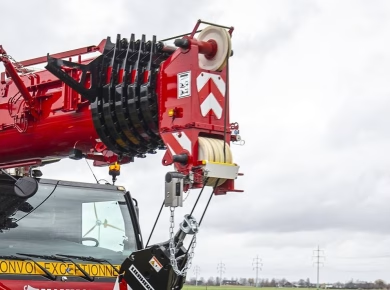The hum of machinery, the chatter of workers, and the constant flow of tasks can create a vibrant atmosphere on any construction site. However, beneath that energetic exterior, workplace stress often simmers, posing serious risks not just to mental well-being but also to physical safety. As someone who has spent years navigating the complexities of the construction and safety industries, I’ve witnessed firsthand how stress can morph from a silent burden into a glaring safety hazard, affecting decision-making, focus, and ultimately, the safety of everyone on site.
Understanding the Impact of Stress on Safety
Stress isn’t merely an emotional state; it can have tangible effects on performance and safety. When workers are overwhelmed, their ability to concentrate diminishes. Tasks that require precision, such as operating heavy machinery or following safety protocols, can suffer as a result. For instance, I remember a project where a seasoned operator miscalculated a lift because he was dealing with personal issues that had spilled over into his work life. The mistake, fortunately, was caught in time, but it highlighted the real dangers that can arise when stress becomes a daily companion.
Signs of Stress in the Workplace
Identifying stress in the workplace requires keen observation. Look for signs such as increased irritability, changes in work performance, or even physical symptoms like fatigue and headaches. I’ve also noticed that team dynamics can shift when stress levels rise; communication may break down, leading to misunderstandings and errors. Regular check-ins with team members can help uncover these issues before they escalate, fostering an environment where workers feel safe to share their challenges.
Creating a Supportive Environment
Establishing a culture that prioritizes mental well-being is crucial. Simple practices can make a significant difference. For example, implementing regular breaks can help alleviate stress. On one site, we introduced a “ten-minute check-in” where teams gathered briefly to discuss not just the progress of the day but also how they were feeling. This small act built camaraderie and allowed workers to express concerns, reducing the feeling of isolation that often accompanies stress.
Encouraging Open Communication
Encouraging open communication isn’t just about creating a friendly atmosphere; it’s about building a safety net. When workers feel they can voice their concerns, they’re more likely to report unsafe conditions or stress-related issues. Regular safety meetings that incorporate discussions about mental health can help normalize these conversations. It’s essential to provide training for supervisors and team leaders on how to handle these discussions delicately and effectively.
Training and Resources for Stress Management
Equipping teams with stress management tools can significantly improve workplace safety. Offering workshops on time management, mindfulness, and coping strategies can empower workers to manage stress proactively. I’ve seen organizations that invested in mental health training for their staff experience a notable decrease in workplace accidents. In one instance, a team that had undergone stress management training was able to identify potential hazards related to fatigue before they turned into incidents.
Utilizing Technology for Support
In today’s digital age, technology can also be a valuable ally in managing workplace stress. Apps designed for mental health can provide easy access to coping strategies and relaxation techniques. For instance, one construction firm implemented a mobile app that allowed workers to track their stress levels and receive personalized tips on managing their mental health. The feedback was overwhelmingly positive, showing that when employees feel supported, they are more engaged and aware of their surroundings.
Regular Assessment and Feedback Loops
Just as we conduct regular safety audits, it’s vital to assess the mental health climate of the workplace continuously. Anonymous surveys can be an excellent tool for gauging employee stress levels and gathering honest feedback about their experiences. When one company conducted such a survey, they discovered that many employees felt overburdened with their workloads. The results led to a reevaluation of task allocations and the introduction of a mentorship program to support junior staff.
Creating Action Plans Based on Findings
Once you have the data, it’s crucial to act on it. Create action plans that address the specific stressors identified in your assessments. Whether it’s adjusting workloads, improving training programs, or enhancing support systems, taking tangible steps shows employees that their well-being is a priority. In my experience, engaging workers in this process not only boosts morale but also fosters a sense of ownership and accountability.
Conclusion: A Call to Action for Safety Professionals
The intersection of workplace stress and safety is a critical area that deserves our immediate attention. As professionals in construction, health and safety, and site management, we have the responsibility to create environments where mental health is prioritized alongside physical safety. By fostering open communication, providing training, and actively seeking feedback, we can mitigate the risks associated with stress and cultivate a culture of well-being. The stakes are high, but by taking proactive steps, we can ensure that every worker leaves the site not just safe, but also mentally resilient and supported. Let’s lead the charge toward a safer, more supportive workplace for everyone involved.



